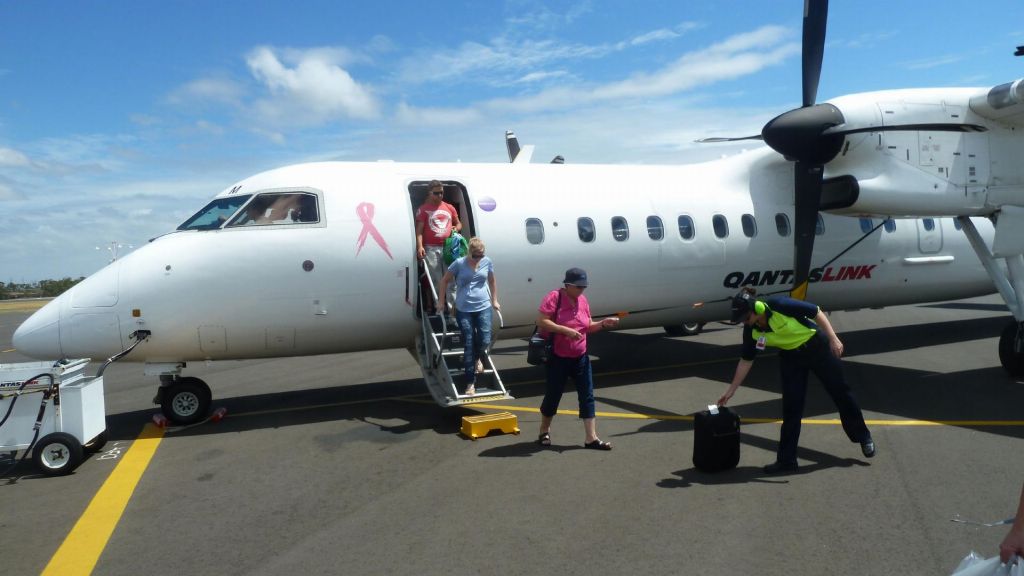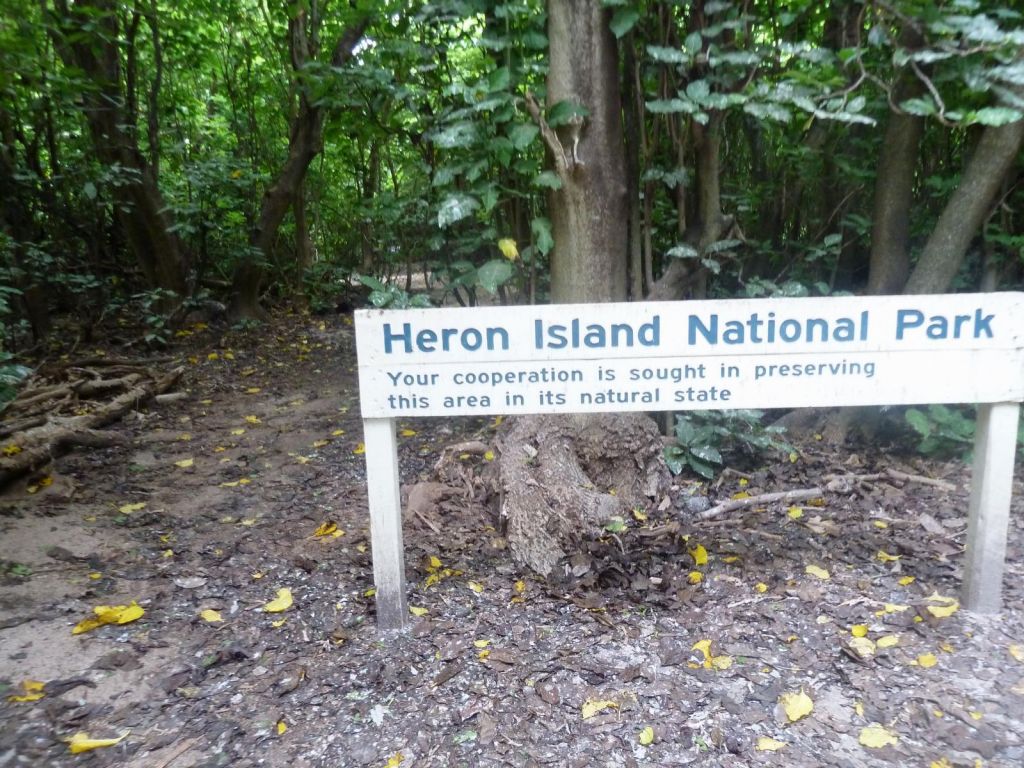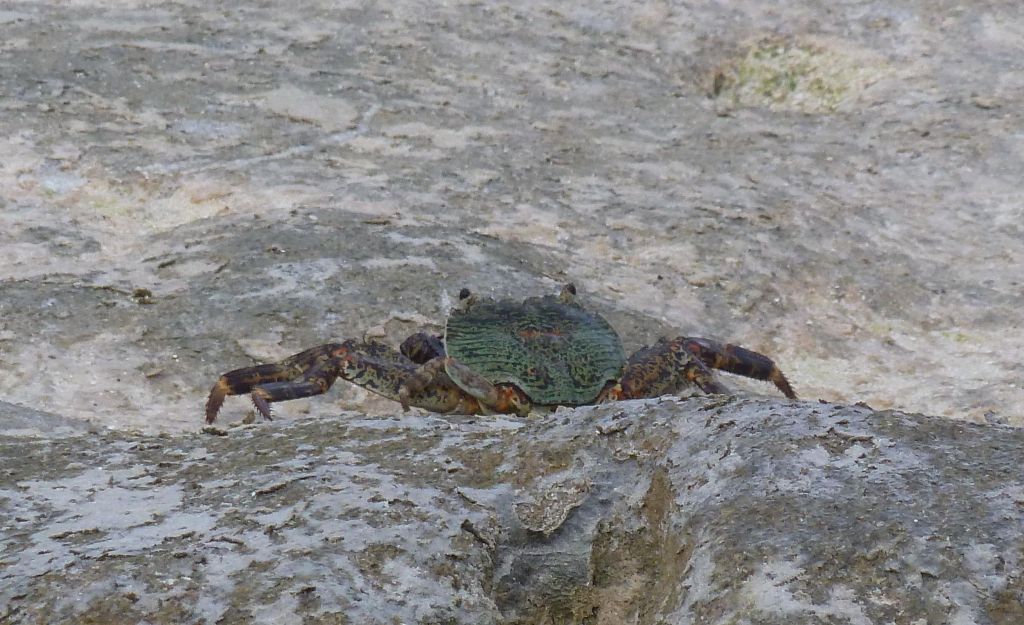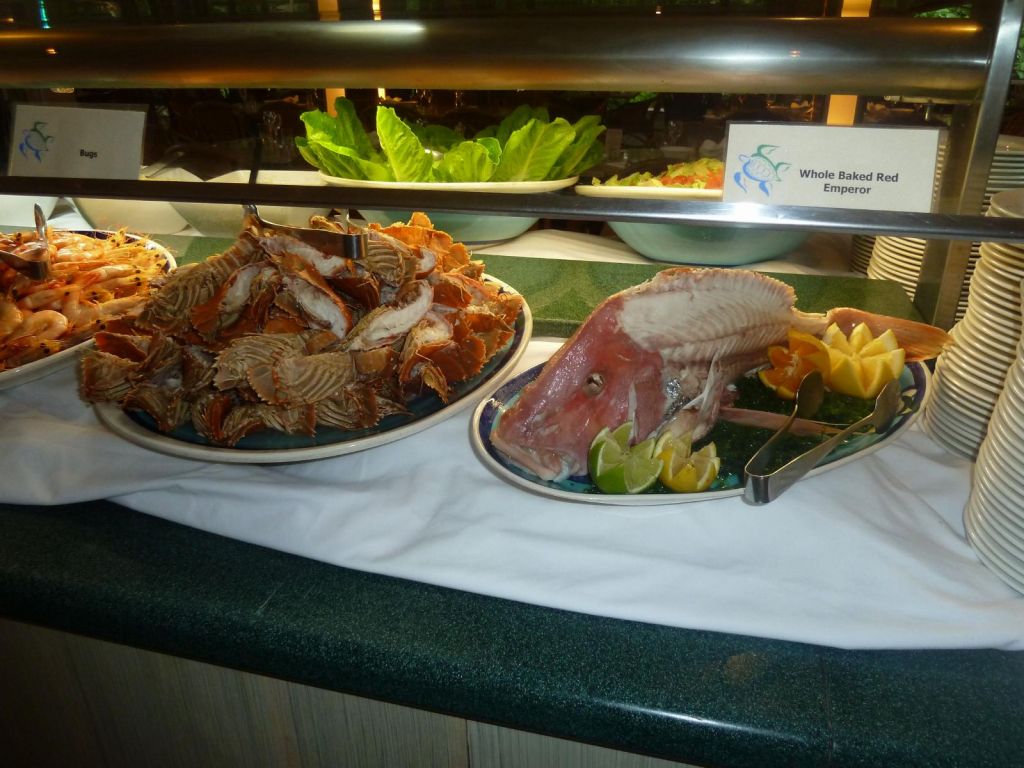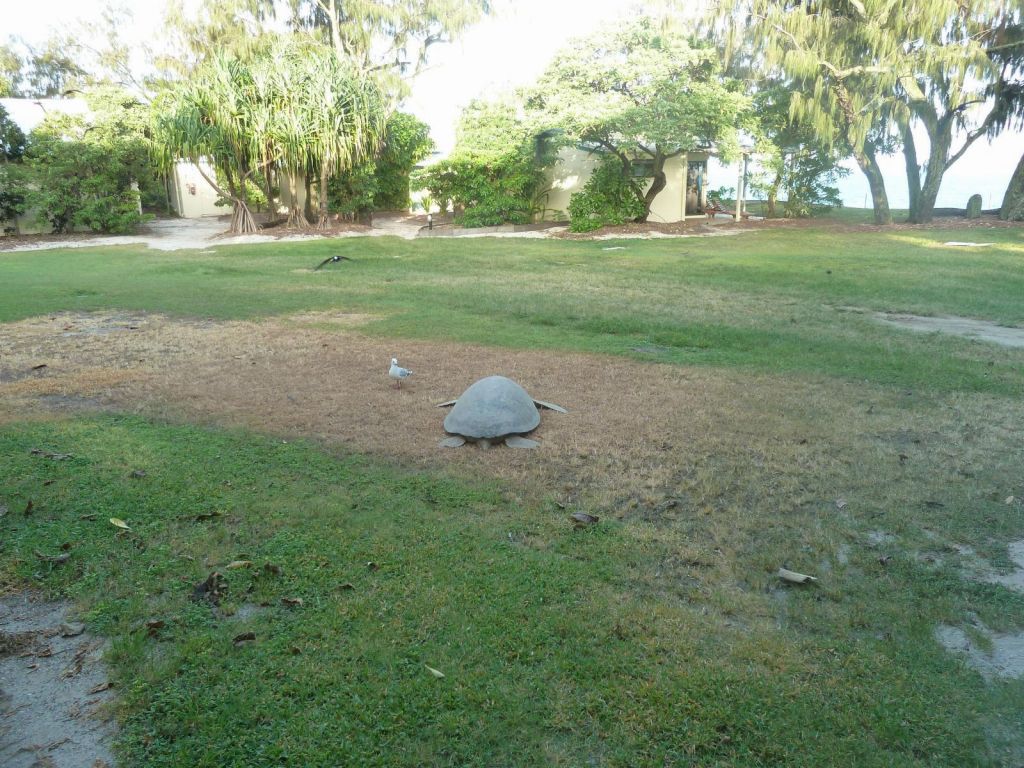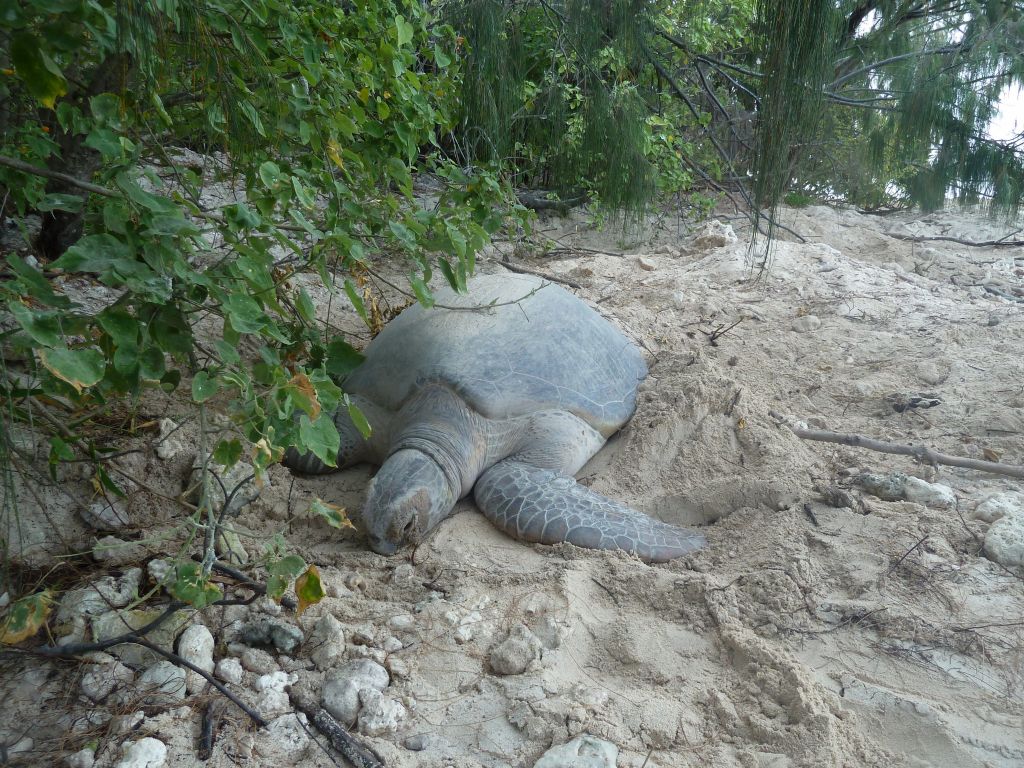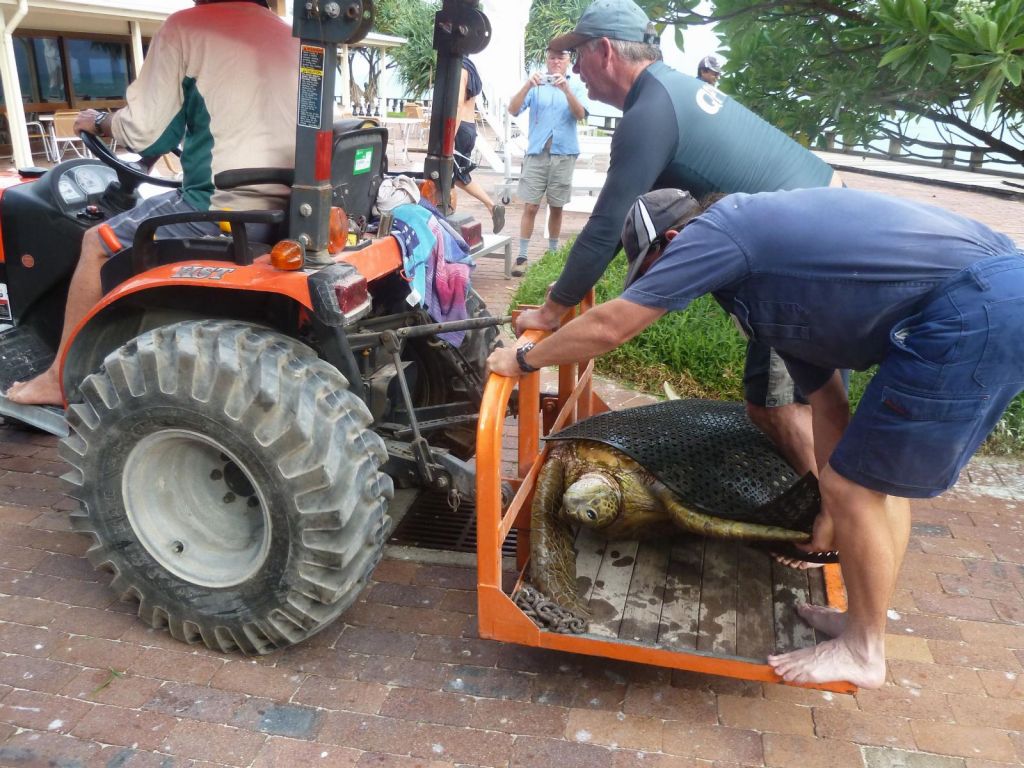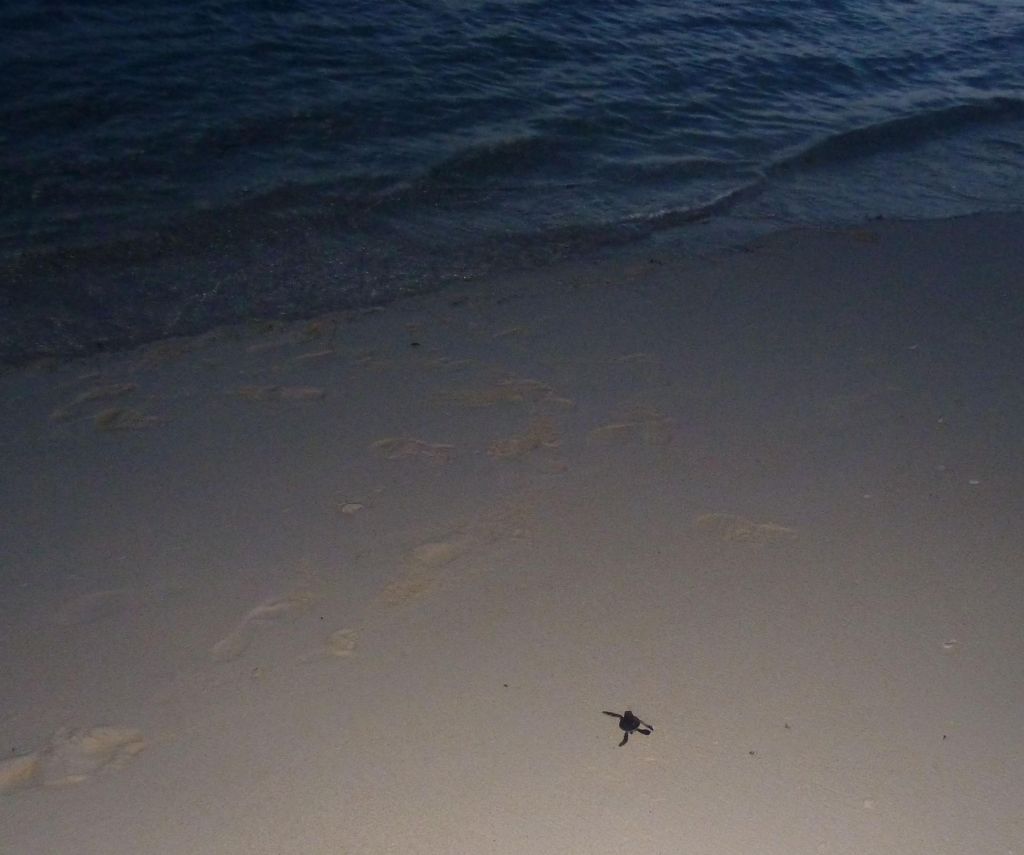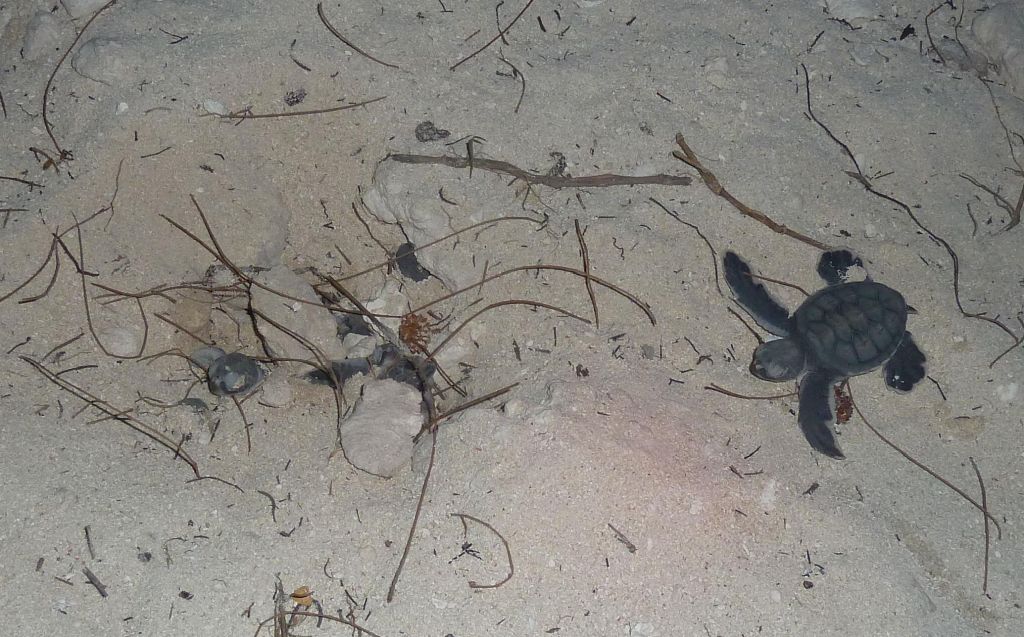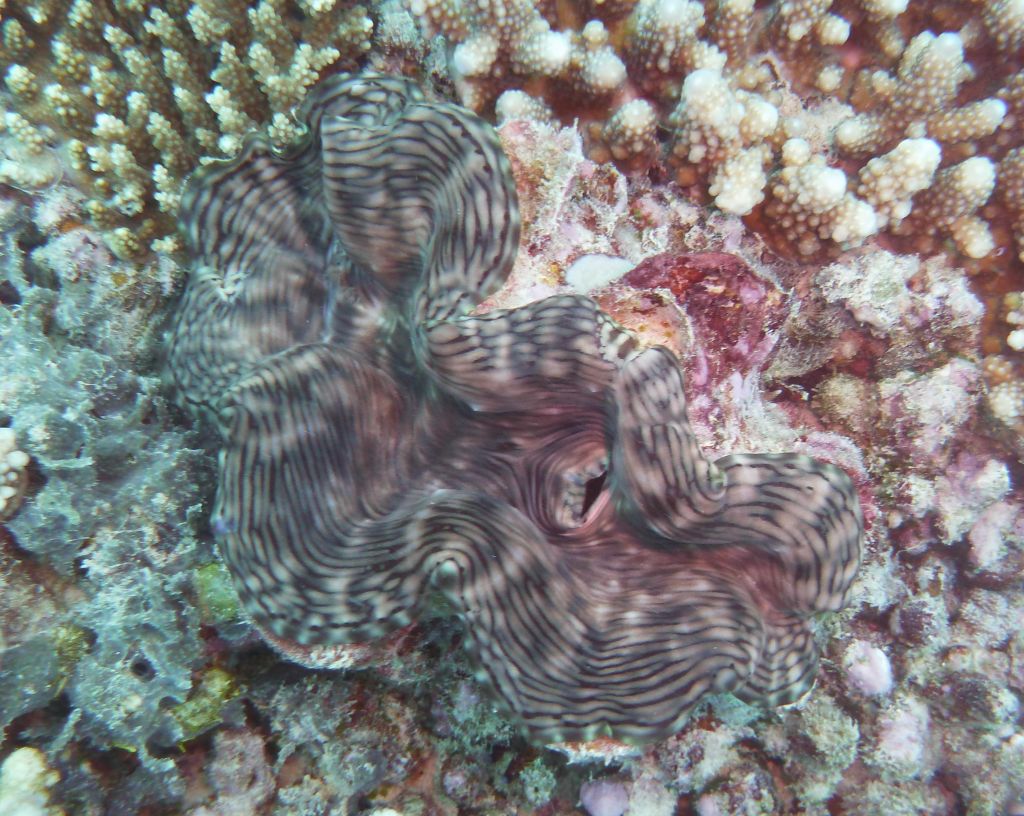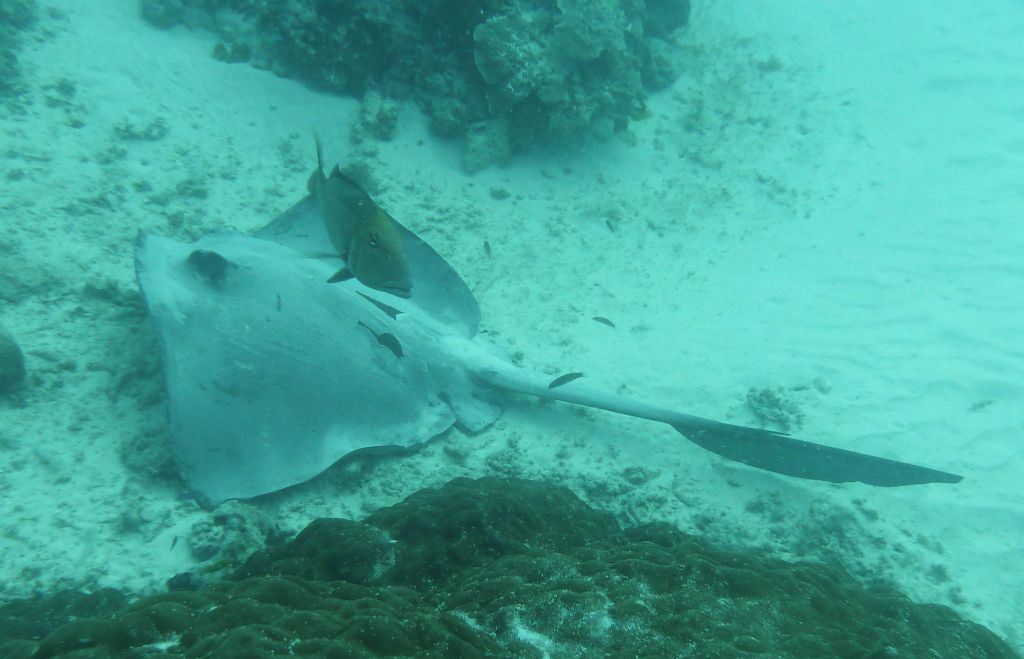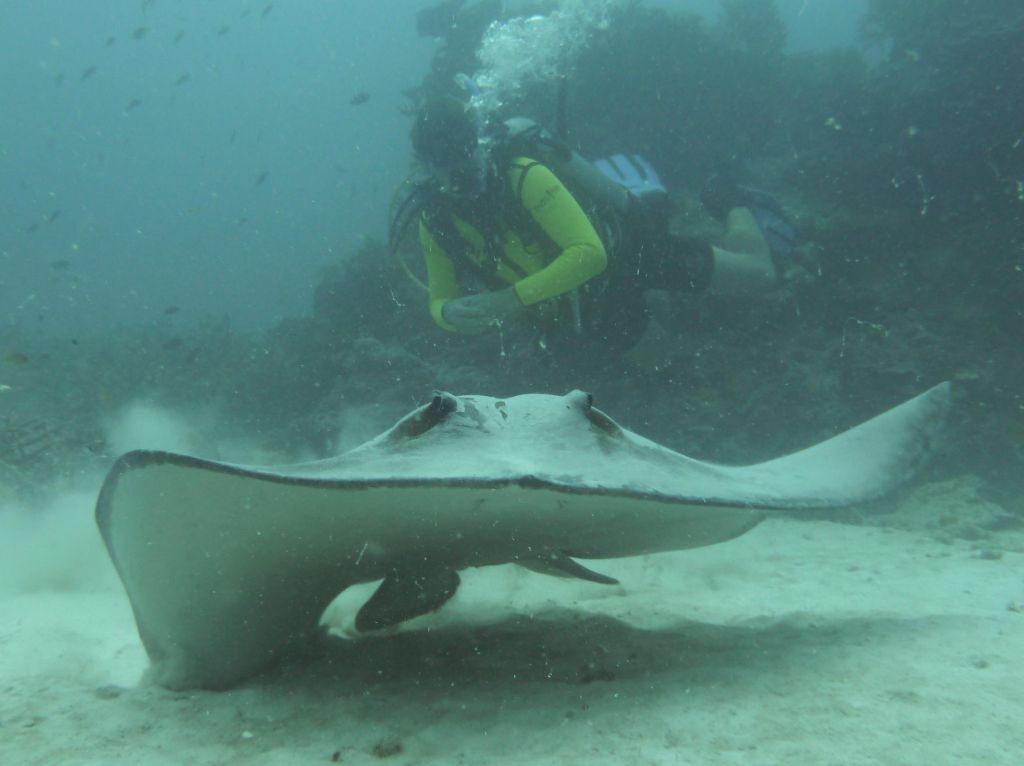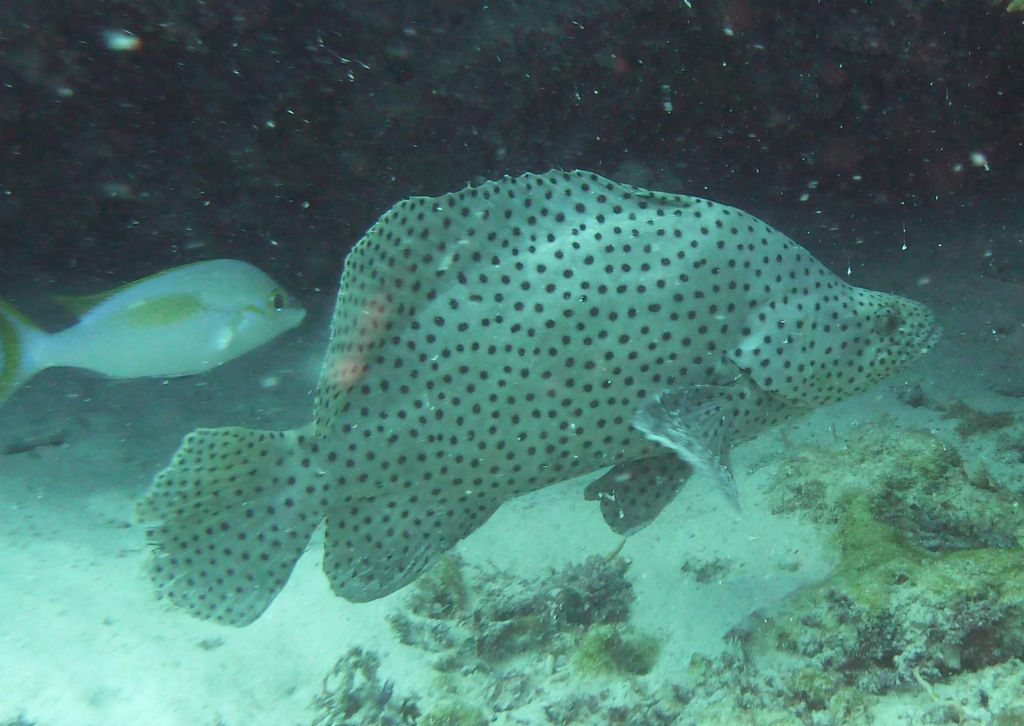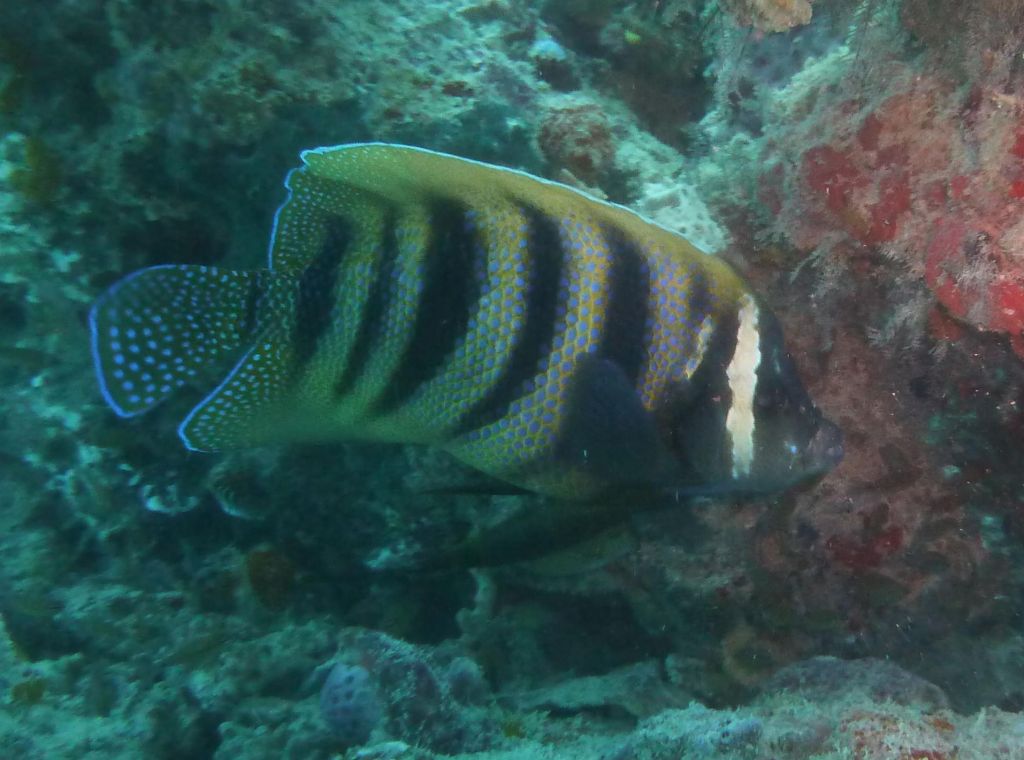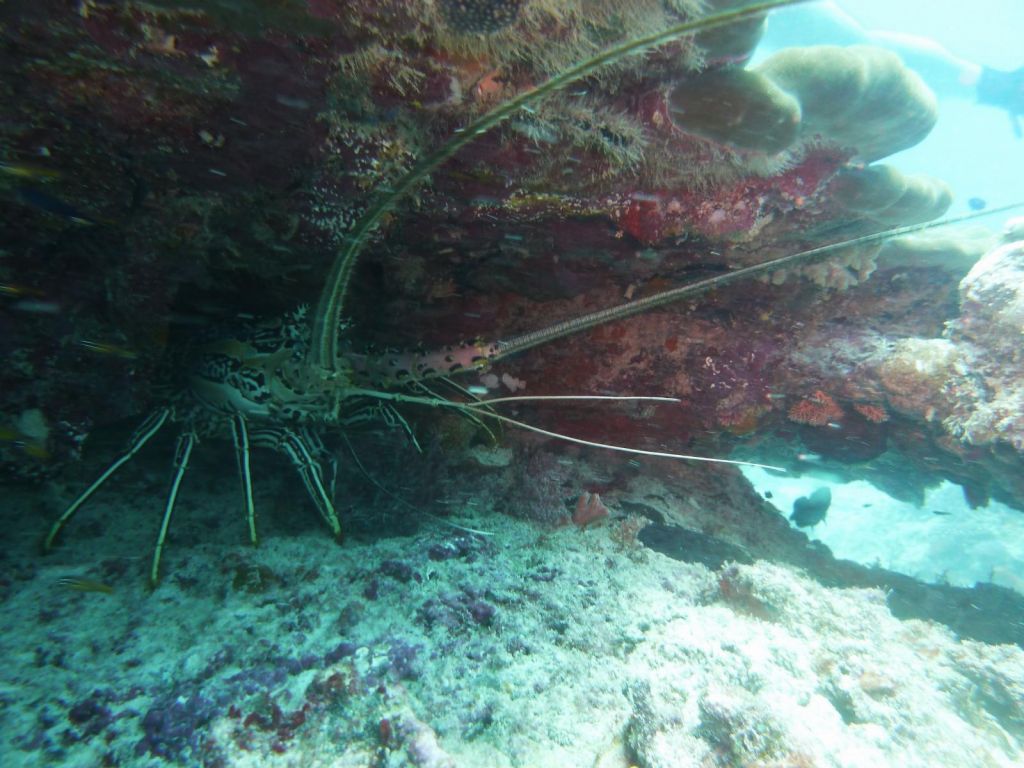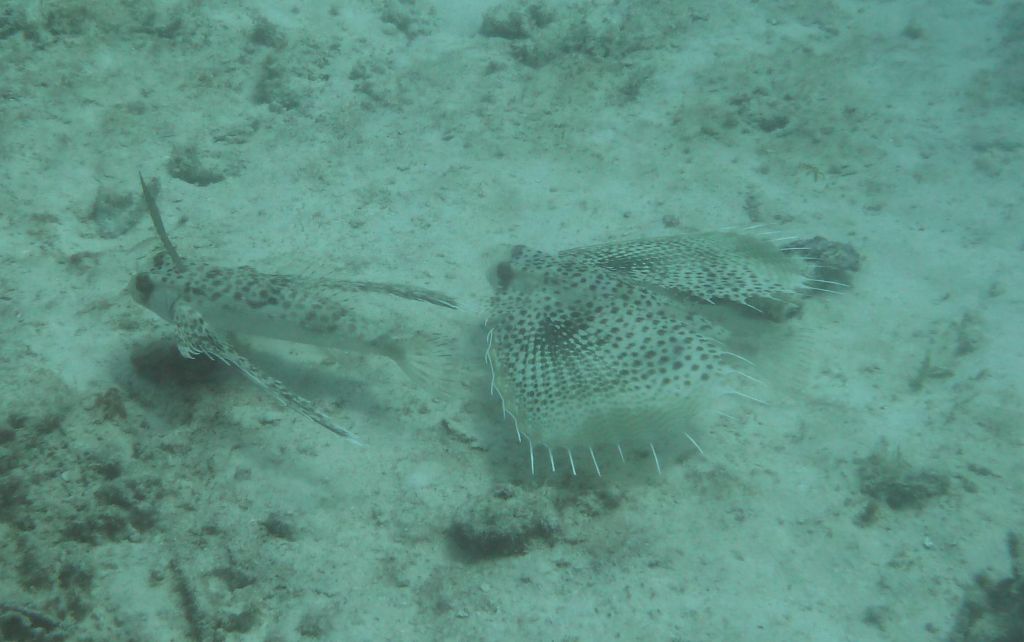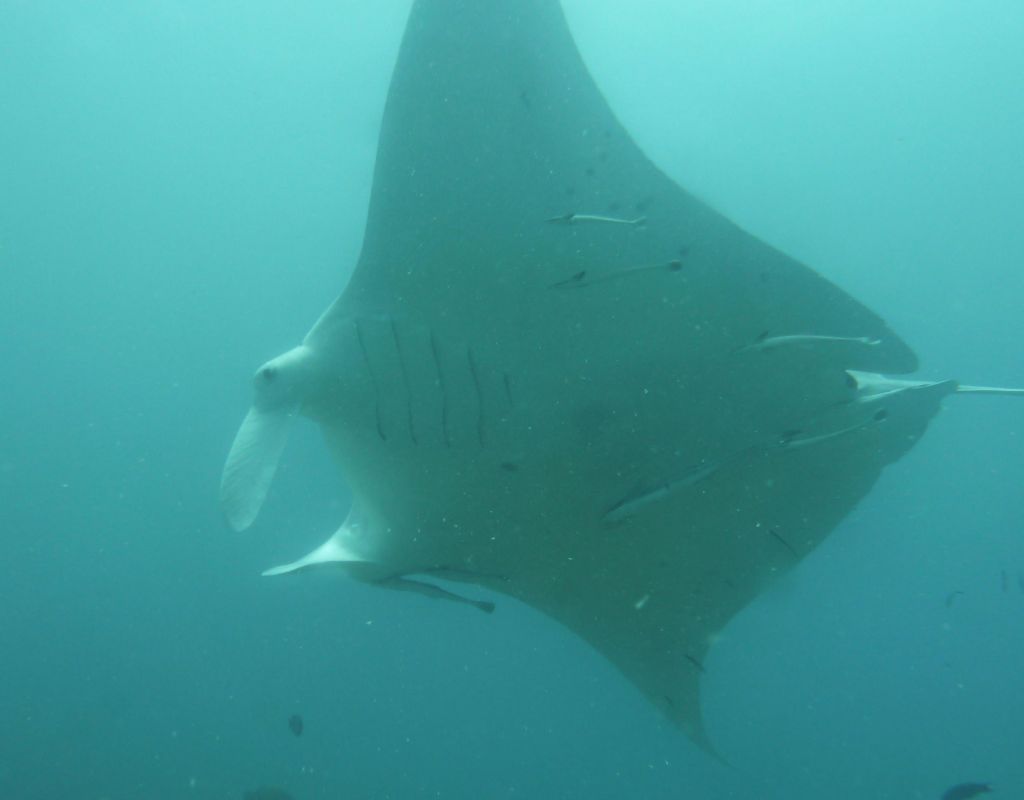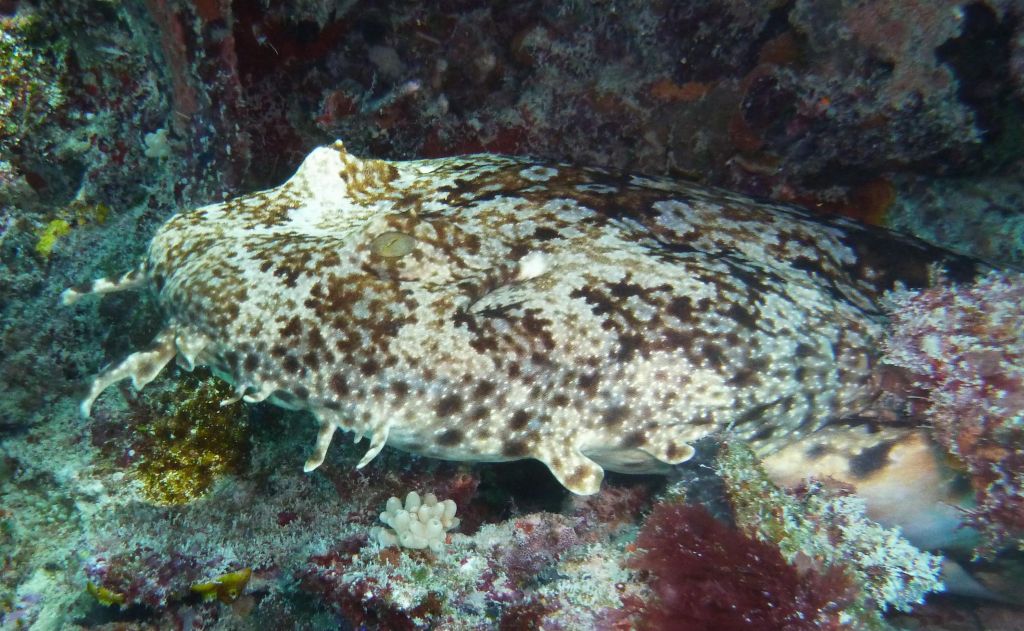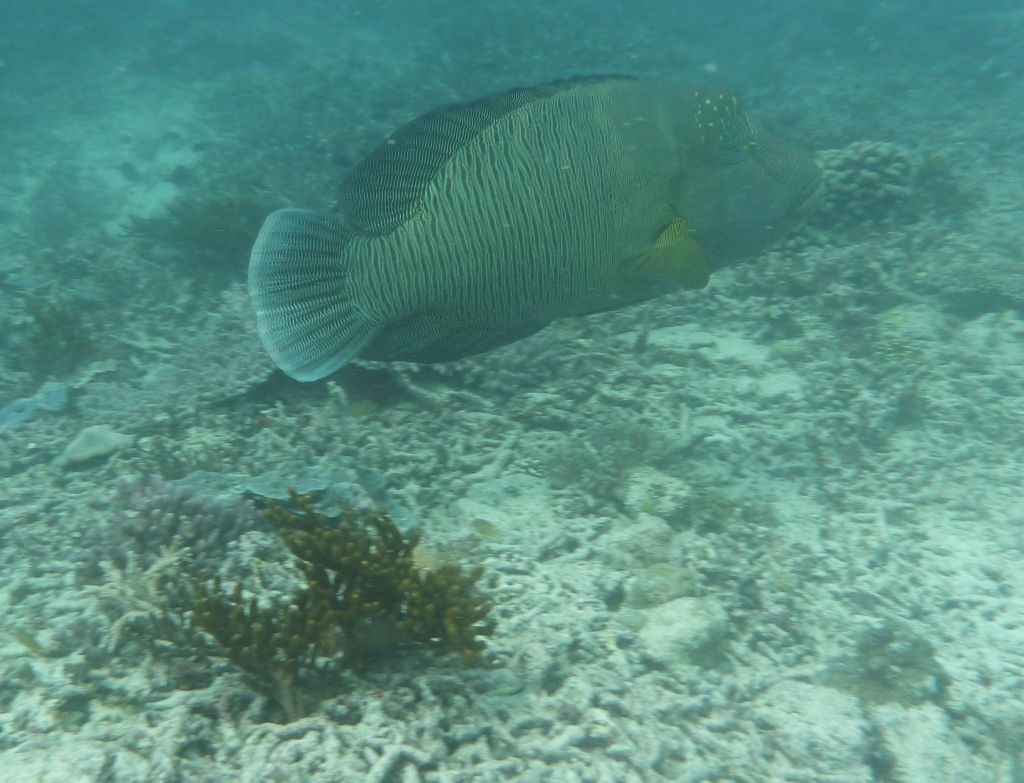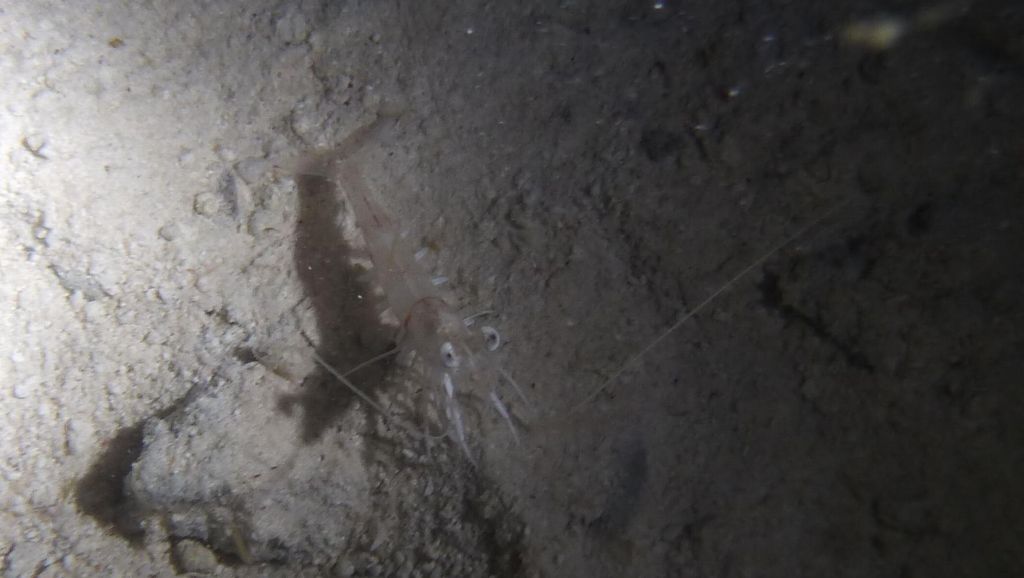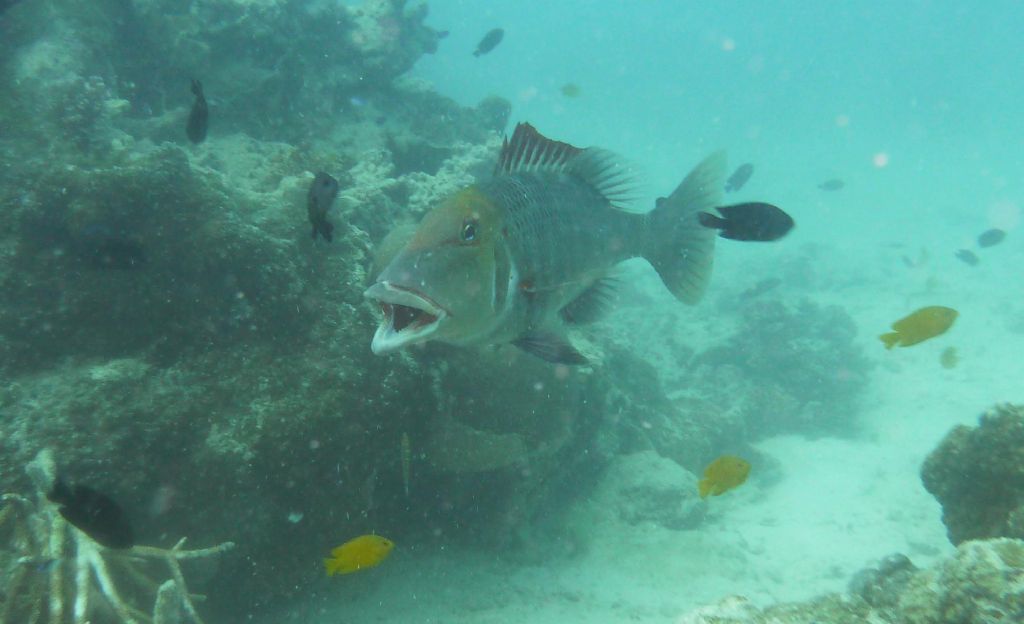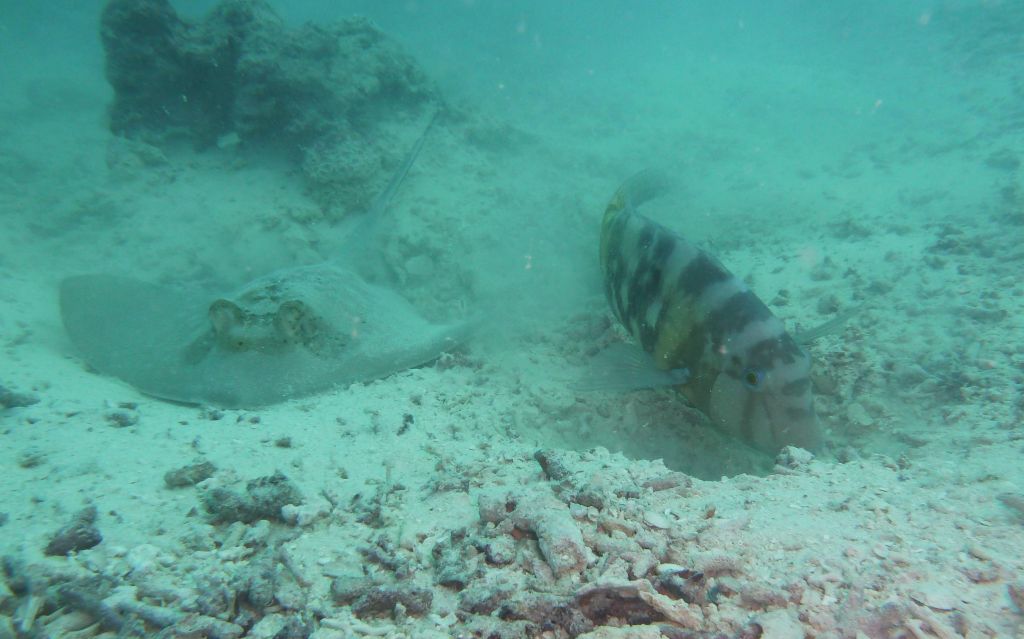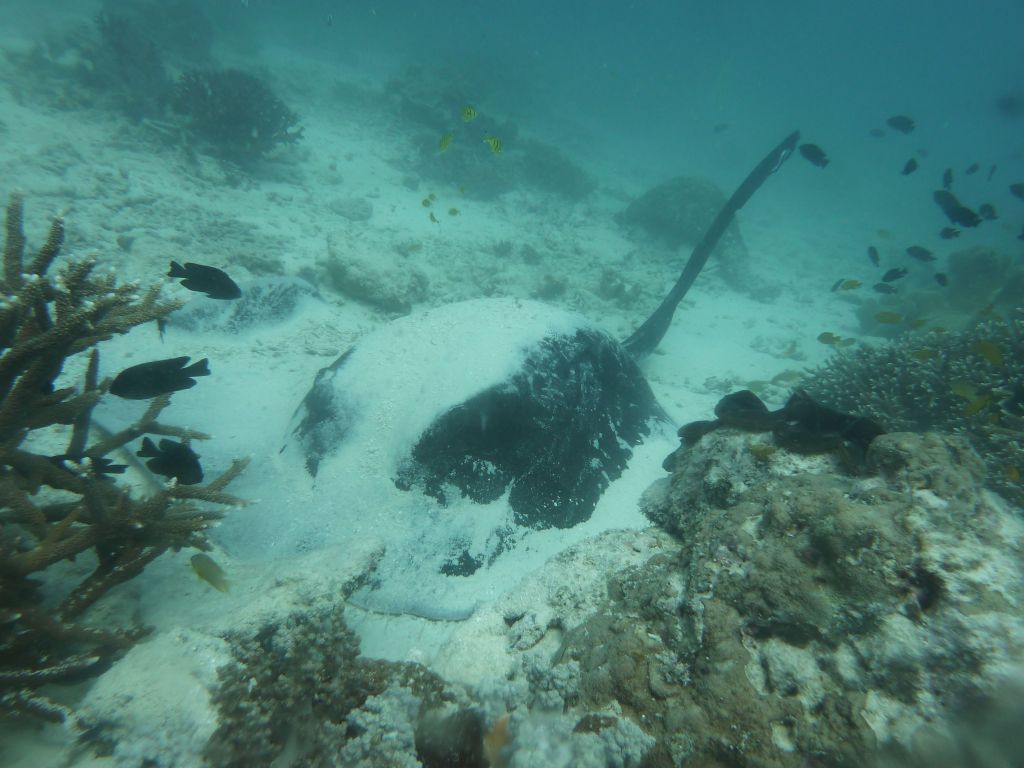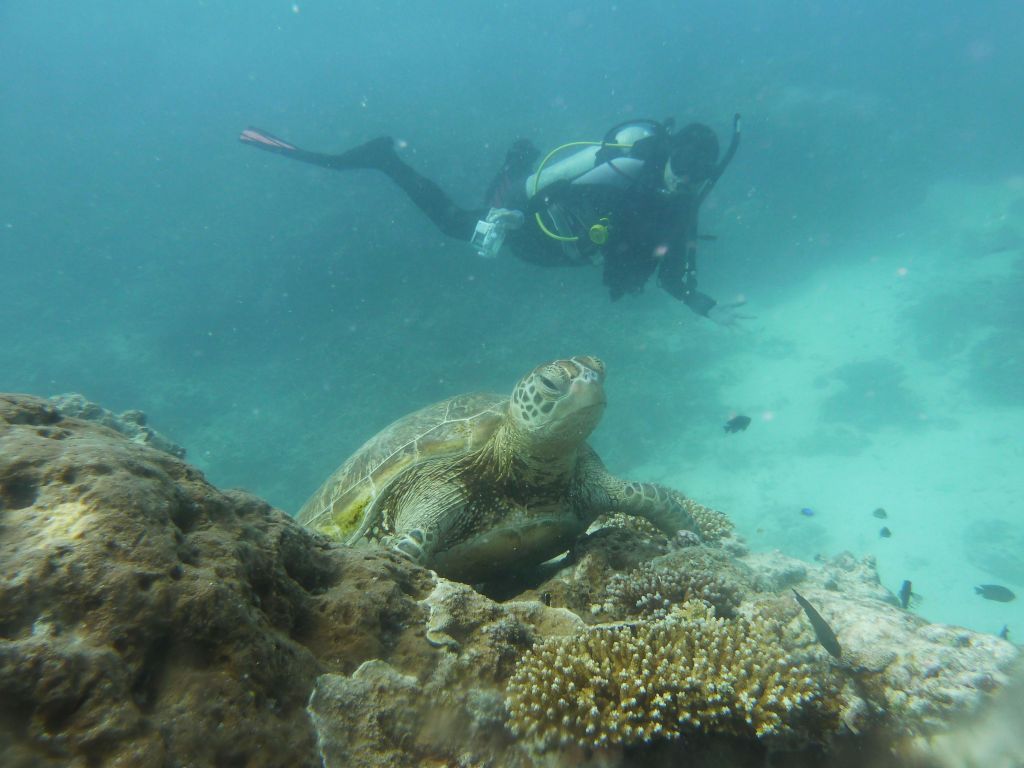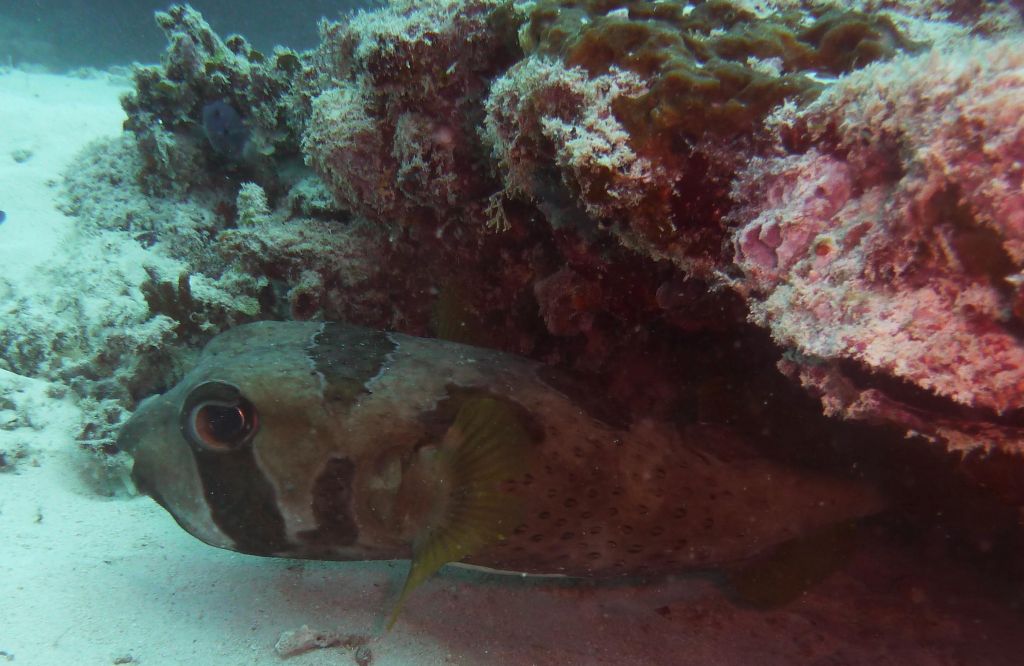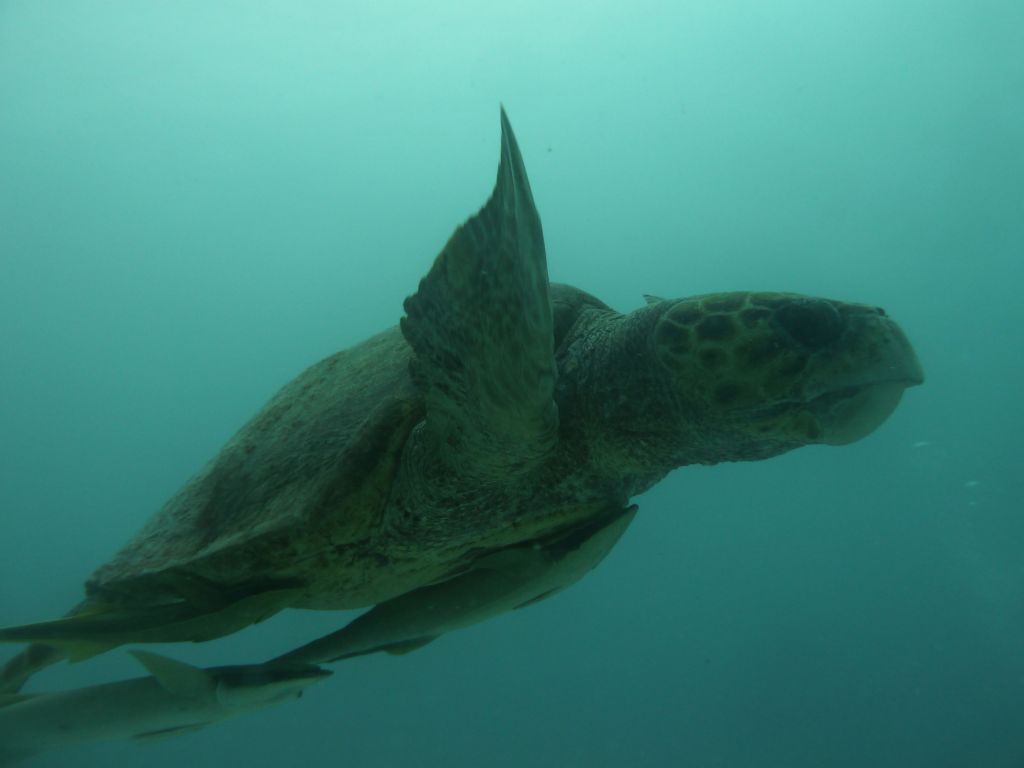
Gladstone has a single runway for the daily quantas turboprops
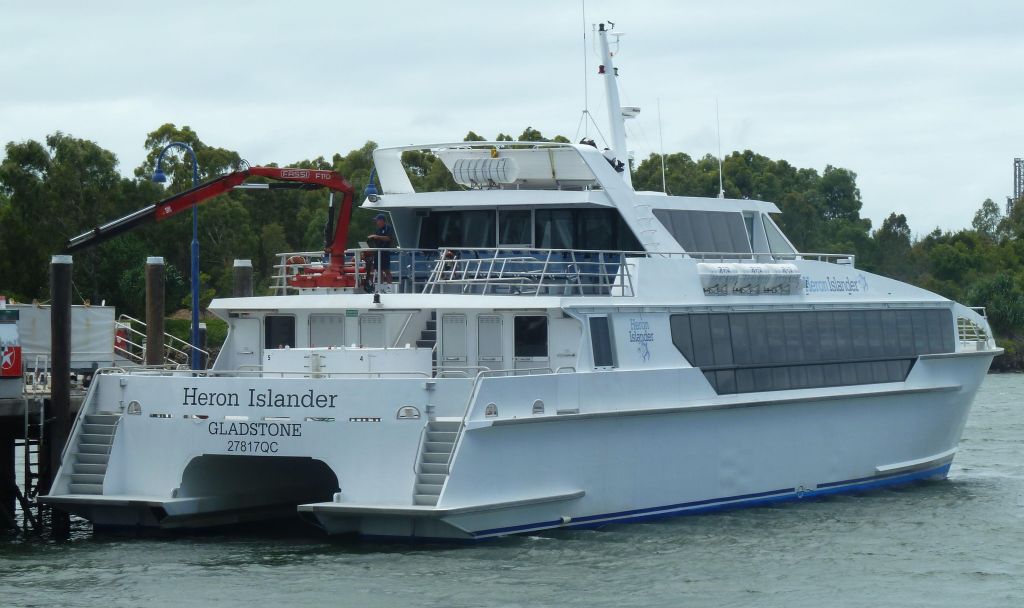
The high speed cat takes people back and forth to Heron Island

Those who can't deal with the sea, can get a shorter scenic flight
Heron Island
In a nutshell, Heron Island is a small island (2.3km around, I jogged it in 13mn in the sand), it is is situated 2H by fast boat from Gladstone, south of Cairns and north of Brisbane. It is a bit expensive to say the least, the basic rooms with food for two go for $400 a night, and go up from there. Diving is extra at first $65/dive down to $45 a dive after a few dives (gear costs extra). That said, if you add it all up, prices are comparable to being on a liveaboard for a week, except that you get 3 dives per day instead of 5 dives per day. On the flipside, you get to stay on land, although if you factor in the mosquitoes, lack of AC in hot damp weather, and stupid very loud mating birds that made a lot of noise all night every night, it may or may not be a win :) However, I felt that seeing nesting turtles come at night, and baby turtles hatch at night and go to the sea, would be cool (it was). While I don't overly mind being on a boat for a week, it's also nice to be on non moving land and still go diving easily every day :).My quick review of Heron Island is that the staff was fantastic, the island was fun to walk around, and accomodations were not bad, but it was hot and humid at night without AC and having windows opened meant more noise from the birds :-/ (while basic accomodations are already expensive to start with, there are even more expensive ones with windows and AC). Since we had the more basic accomodations (reef room), I was woken up every night by stupid birds with loud mating calls all night (this was because it was mating season). The upside is that it was also trail of turtle nesting season and the start of baby turtle hatching season. A few pictures from Heron Island:

an old boat that got beached on the reef
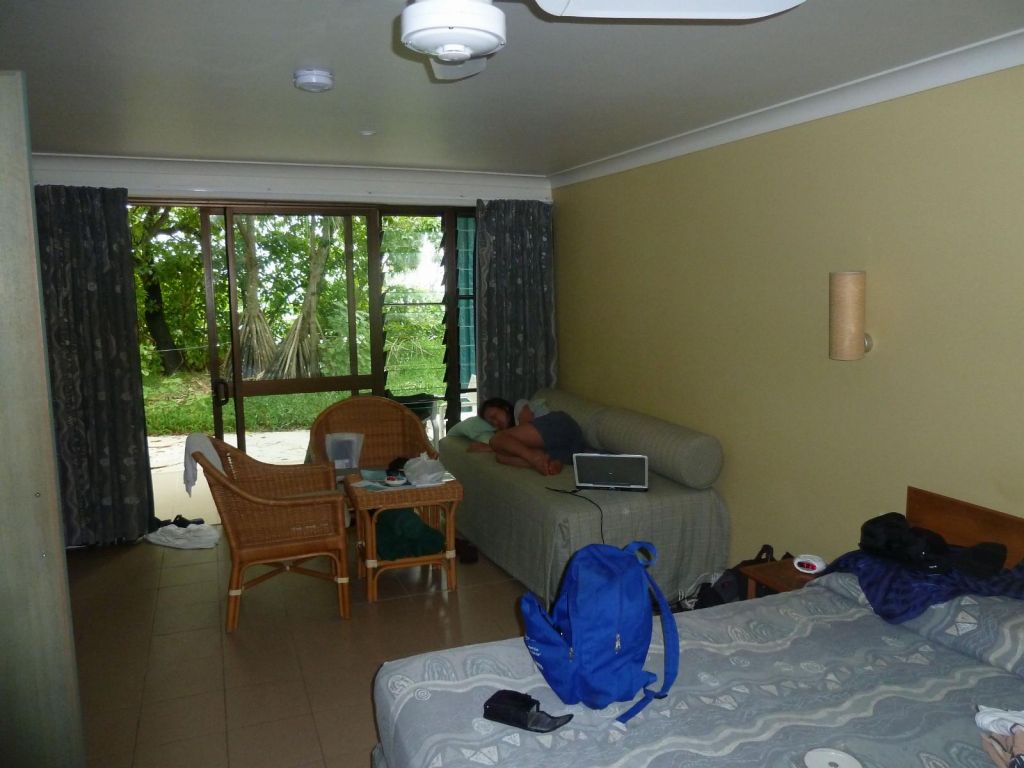
our first reef room wasn't bad, just a bit far from the dive shop, so we moved to a closer one.




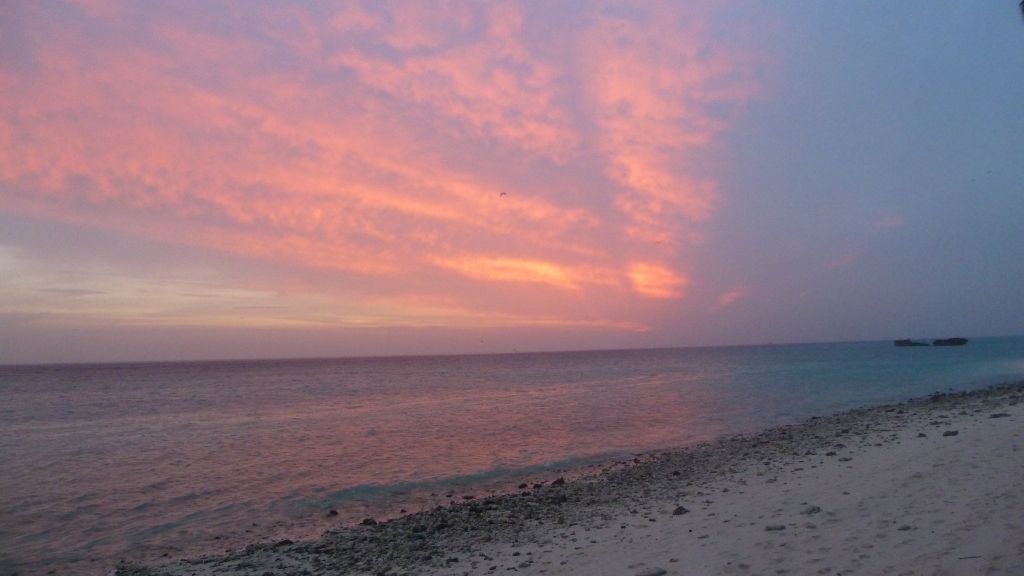
going out of turtles at sunset, got us a few sunsets :)
Heron Island Birds
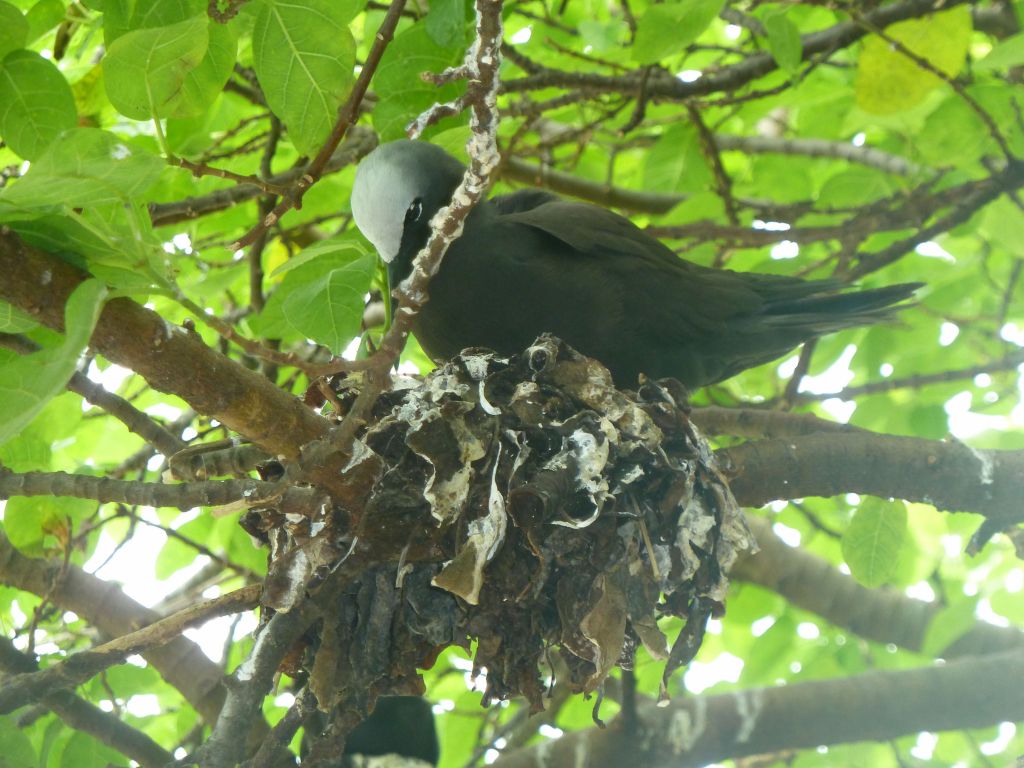
those sea birds evolved to trees and make crappy nests out of dry leaves and poo, their efforts were cute :)
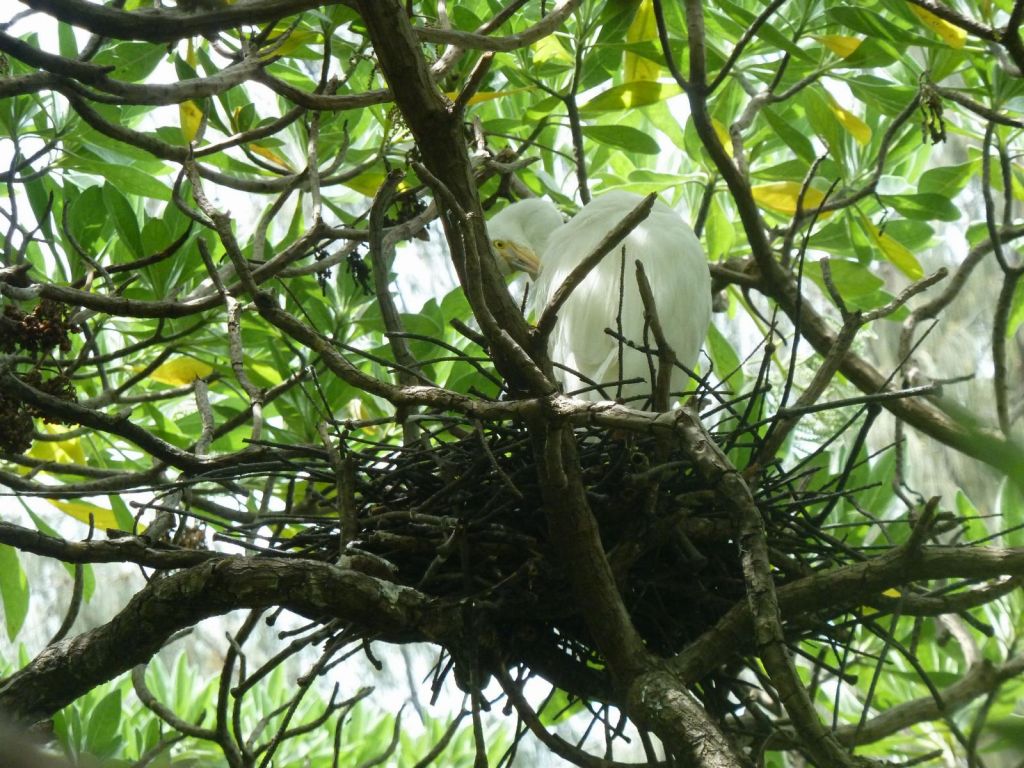
Egrets (another name for Herons), which Heron Island comes from
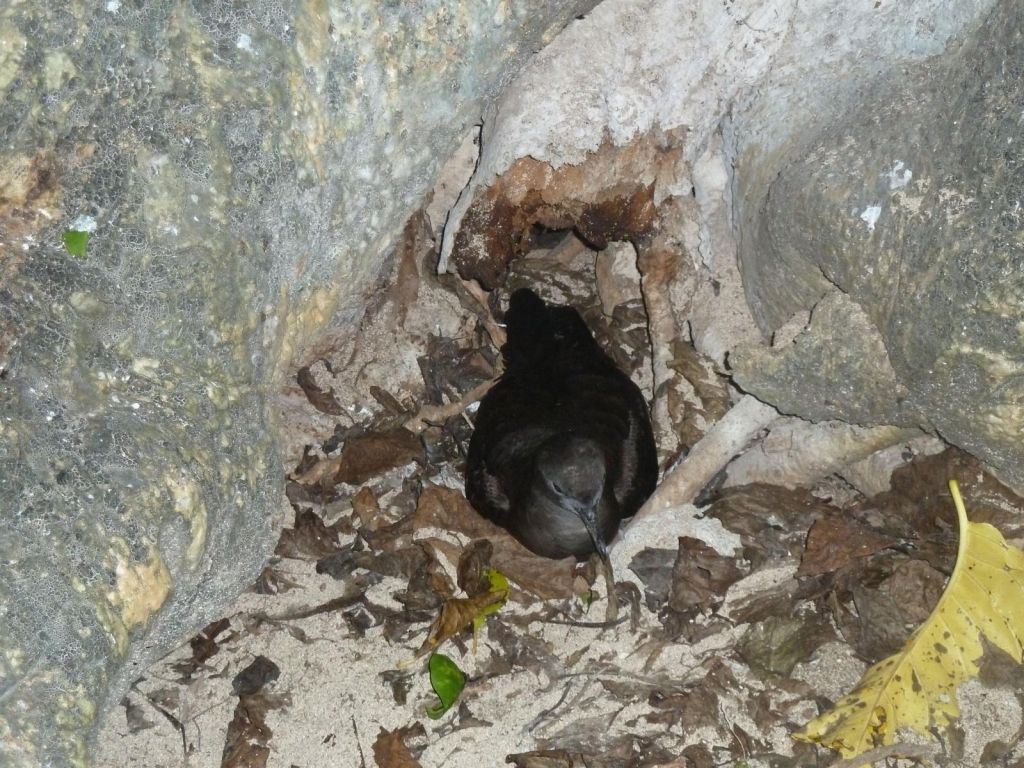
The shearwaters which only come at night, sleep on the ground, and keep everyone awake with loud mating calls
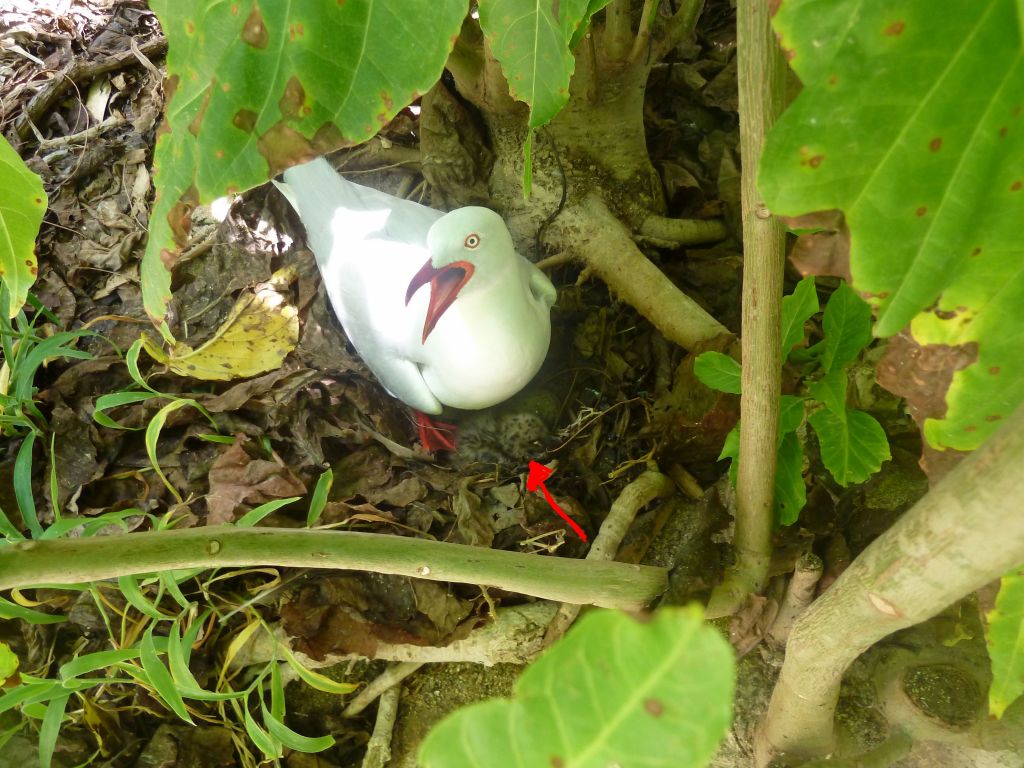
The seagulls were very defensive of their eggs (and see the newboarn baby)
Turtle Nesting
Each night, big green turtles came out of the sea to crawl up the beach to a spot they chose to dig a nest for their eggs. The entire process can take around 5 hours, and one has to be careful at not shining light at turtles when they come up, or they dig as it will spook them out and they'll go back to sea without laying their eggs, which is bad.We saw a video of the whole process at the nature centre, and that waa very informative on what to do and not to do, but it's also a lot easier to see highlights of the entire process already filmed, than to spend literally all night to watch it yourself (turtles aren't known for being fast :) ).

turtle watching: you're doing it wrong
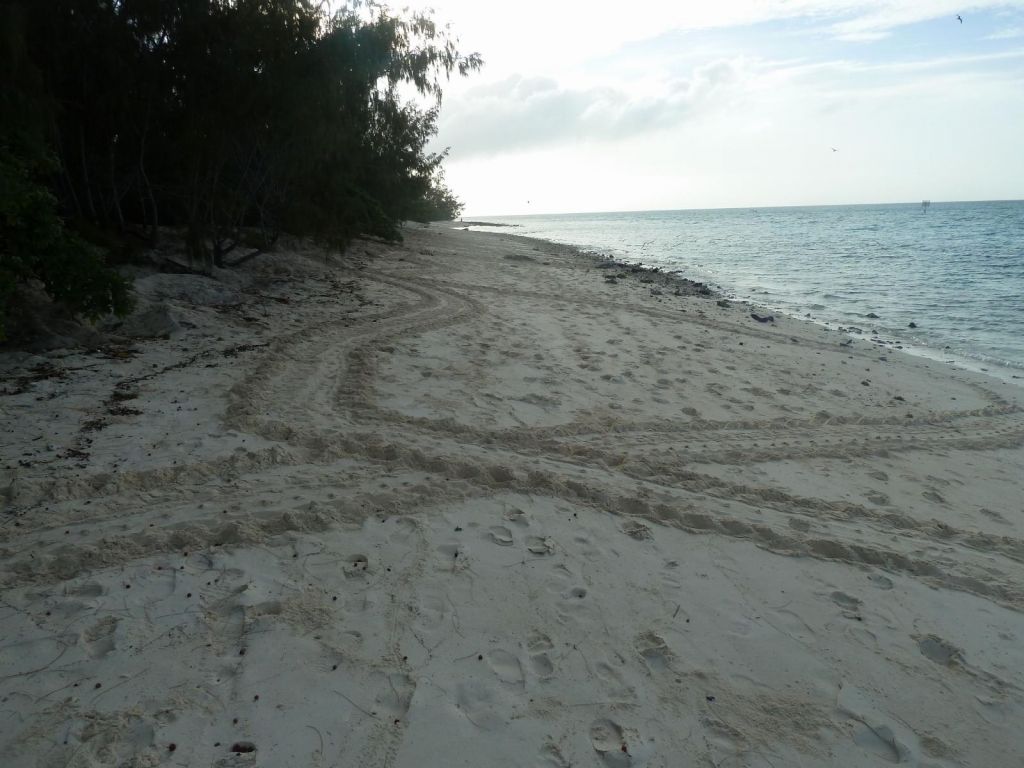
tracks from the nesting turtles

they come after sunset close to high tide

and spend hours to make big holes
Lost Nesting Turtles
Unfortunately, from time to time the village we were in tended to confuse the turtles as they were trying to get back to the ocean. One got stuck in the garden behind our condo, and one got stuck in the smiming pool, which is easier to get in than to get out for a turtle.
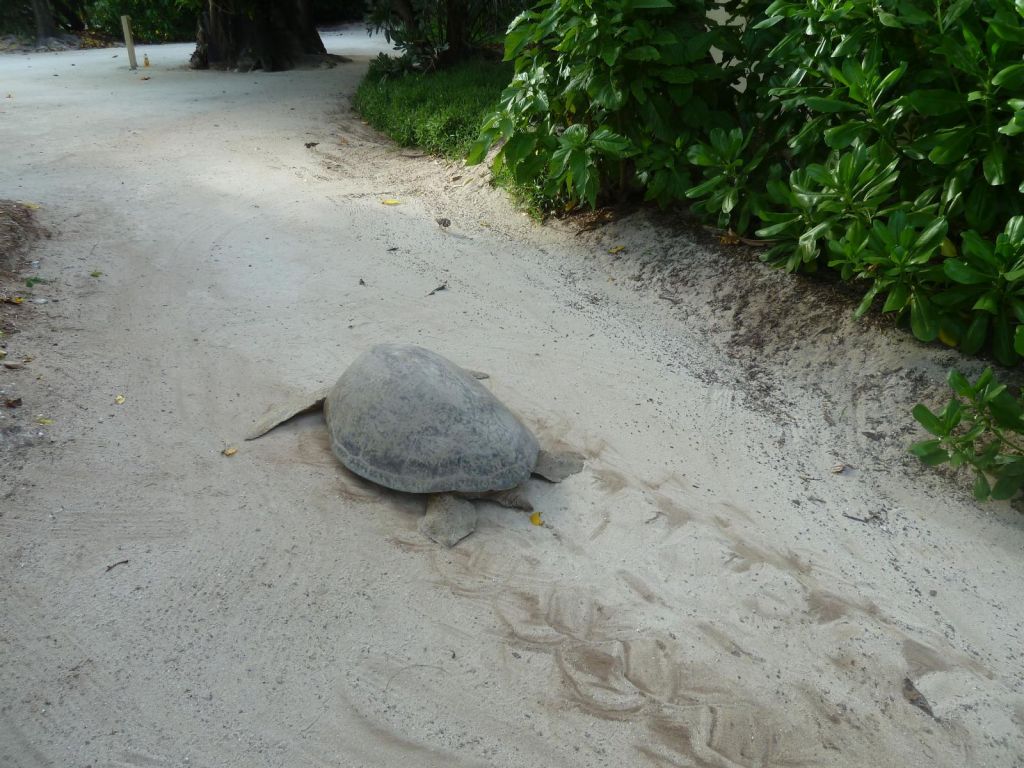
trying to get back to the ocean (we helped it)
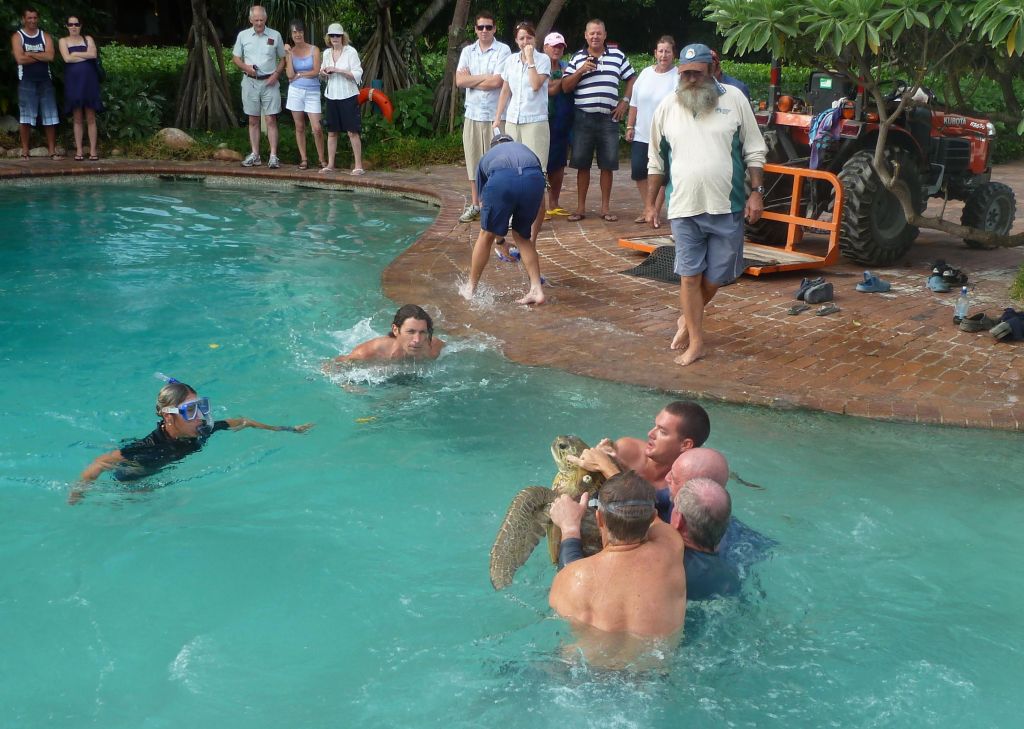
took a few people to get it out :)
Baby Turtle Hatchling
Of course, the best part was the hatchlings. You had to be by the beach by sunset and be lucky: typically if you were at the right place at the right time, you may be lucky and see them come down the beach to the ocean but you had to be fast since it typically only took 2mn or so (it's easy to miss). In our case, we improved the odds a little bit by looking for holes that they were likely to come out of. Twice, we found an early hatchling that made it out outside but that looked stunned or not quite awake yet. From there, we were able to wait and see hatchlings come out of that hole.Normally, they make their way to sea without help, but we helped them by protecting them from seagulls, and used our own lights to steer them to the ocean
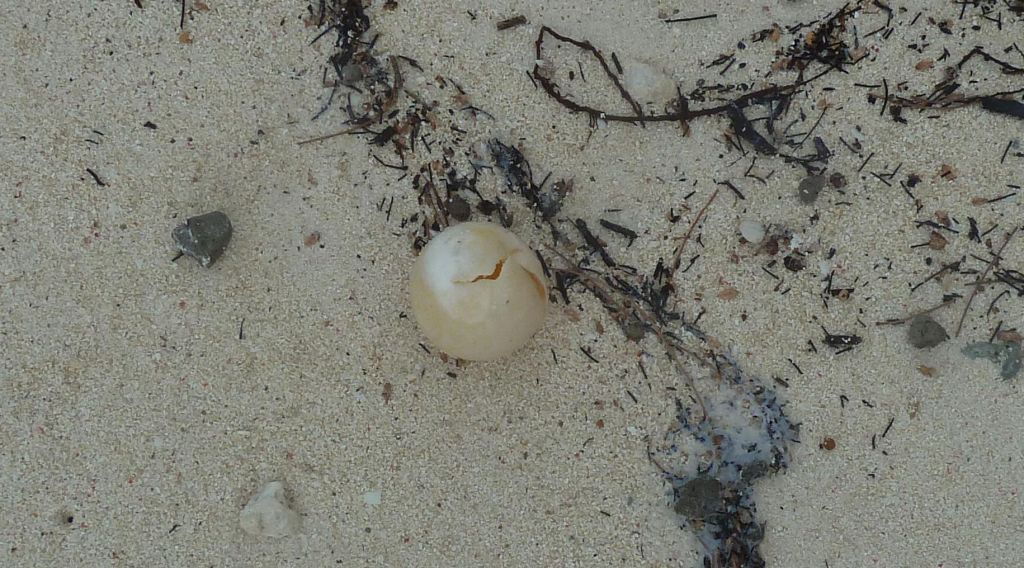
this is what the eggs look like


you can use a flashlight to help the hatchlings to the sea
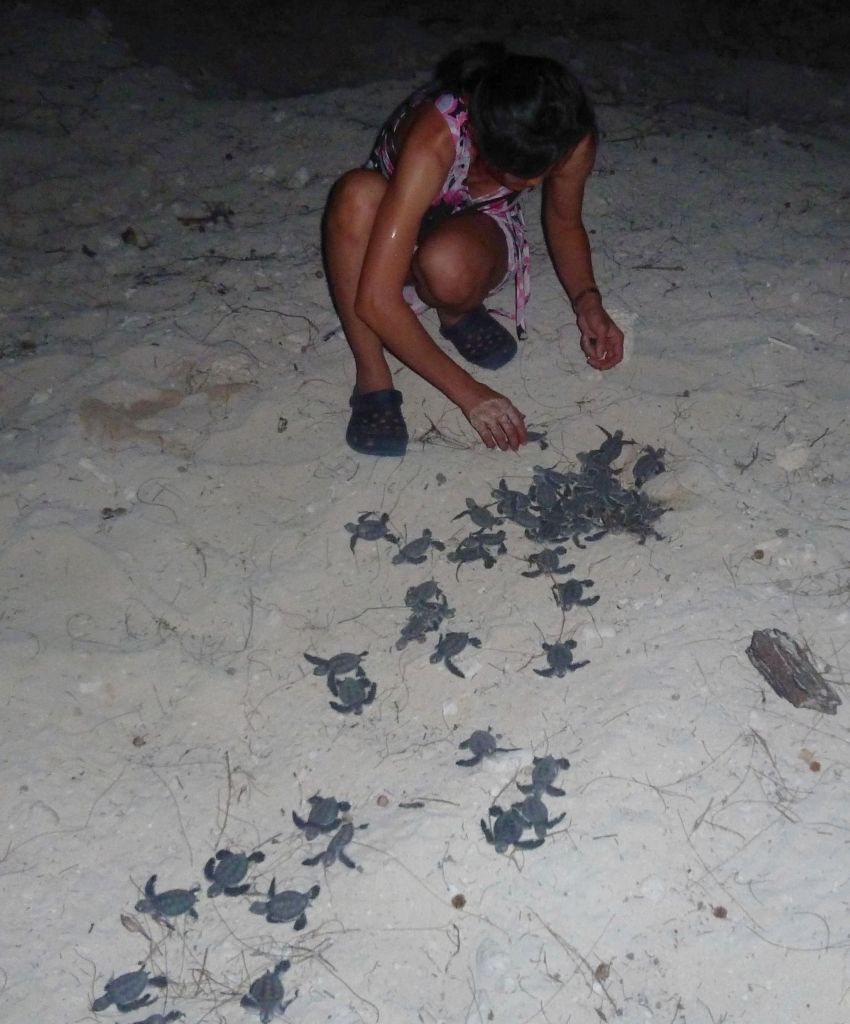
once the top ones got out, it was a swarm
watch the video to see how fast they go
watch the one on the left that flips over itself :) (light is in front of them so that they go for it)

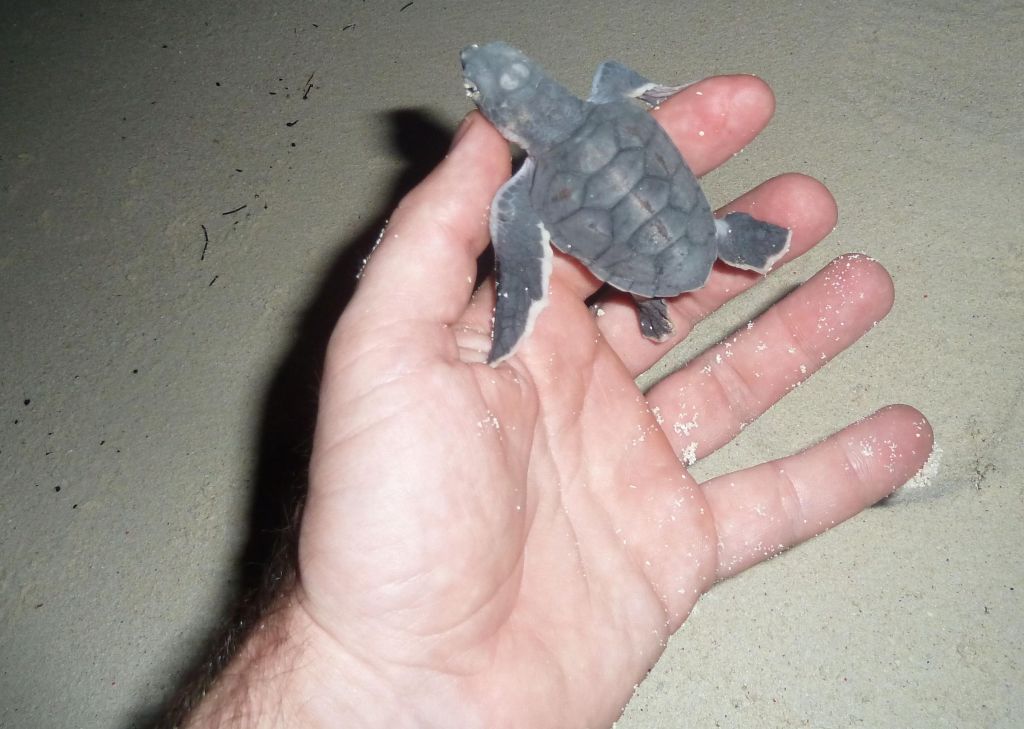
yes, it's tempting to take them home :)
